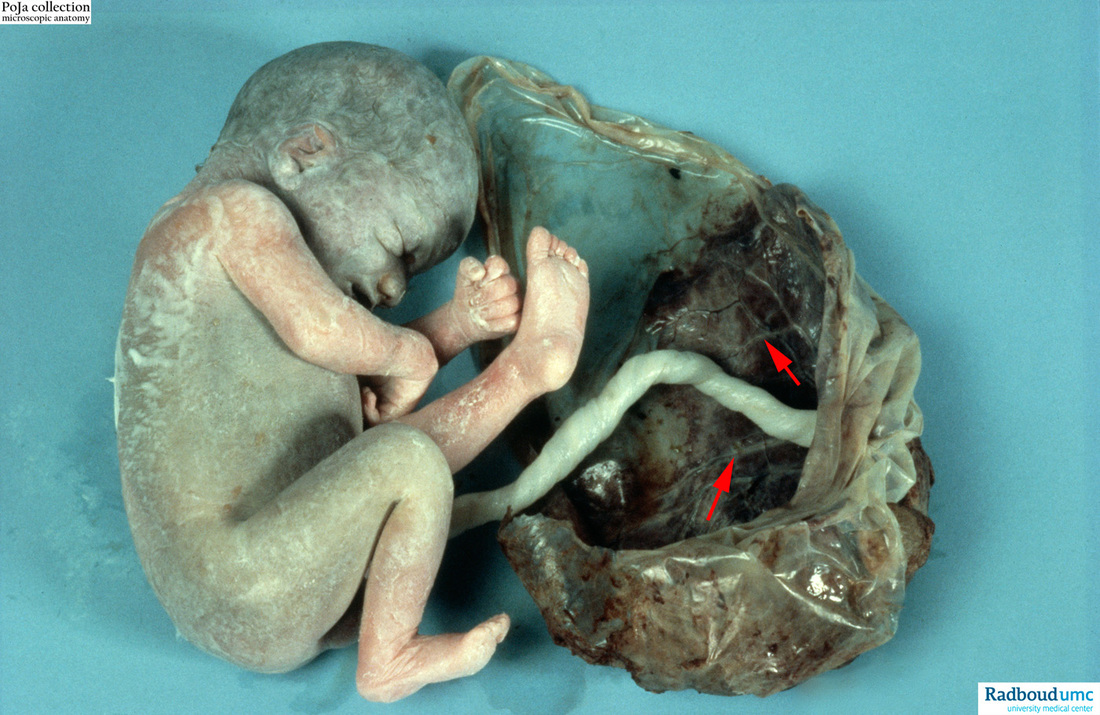7.3 POJA-L1414
Title: Normal term placenta with umbilical cord attached to the fetus (human)
Description: The macroscopy shows the expelled placenta as a discoidal mass with a circular outline about 15-20 cm in the ruptured amnionitic and chorionic sacs. Amnion and smooth chorion (chorion leave) are fused and continuous with the margins of the placenta. The fetal surface (inner surface) is covered by amnion and is shiny, smooth and transparent. The umbilical cord is eccentrically attached the chorionic plate with umbilical vessels (arrows). The fetus is largely covered by the vernix (‘vanishing cream’) its own protective sebaceous, white and thick secretion. (By courtesy of the Museum of Anatomy and Pathology, University Medical Center, Radboud University, Nijmegen, The Netherlands).
Keywords/Mesh: placenta, amnion, chorion, umbilical cord, fetus, chorionic villi, trophoblast, fetus, macroscopy, histology, POJA collection.
Title: Normal term placenta with umbilical cord attached to the fetus (human)
Description: The macroscopy shows the expelled placenta as a discoidal mass with a circular outline about 15-20 cm in the ruptured amnionitic and chorionic sacs. Amnion and smooth chorion (chorion leave) are fused and continuous with the margins of the placenta. The fetal surface (inner surface) is covered by amnion and is shiny, smooth and transparent. The umbilical cord is eccentrically attached the chorionic plate with umbilical vessels (arrows). The fetus is largely covered by the vernix (‘vanishing cream’) its own protective sebaceous, white and thick secretion. (By courtesy of the Museum of Anatomy and Pathology, University Medical Center, Radboud University, Nijmegen, The Netherlands).
Keywords/Mesh: placenta, amnion, chorion, umbilical cord, fetus, chorionic villi, trophoblast, fetus, macroscopy, histology, POJA collection.

